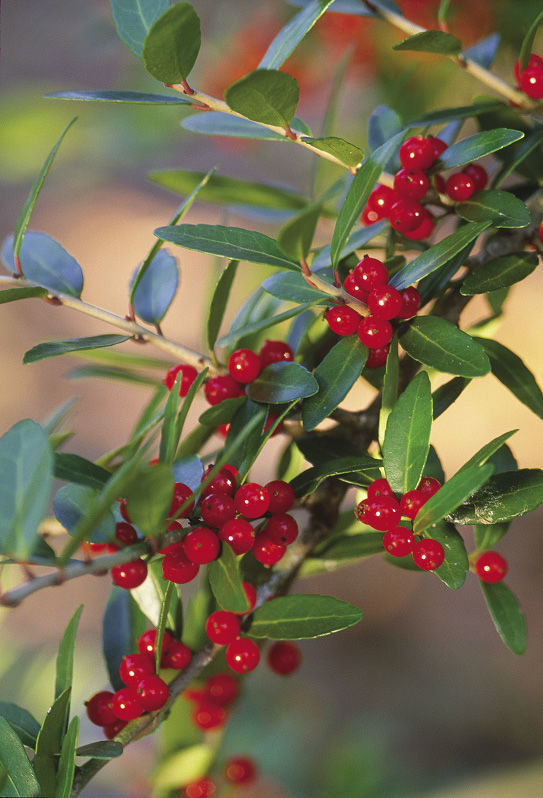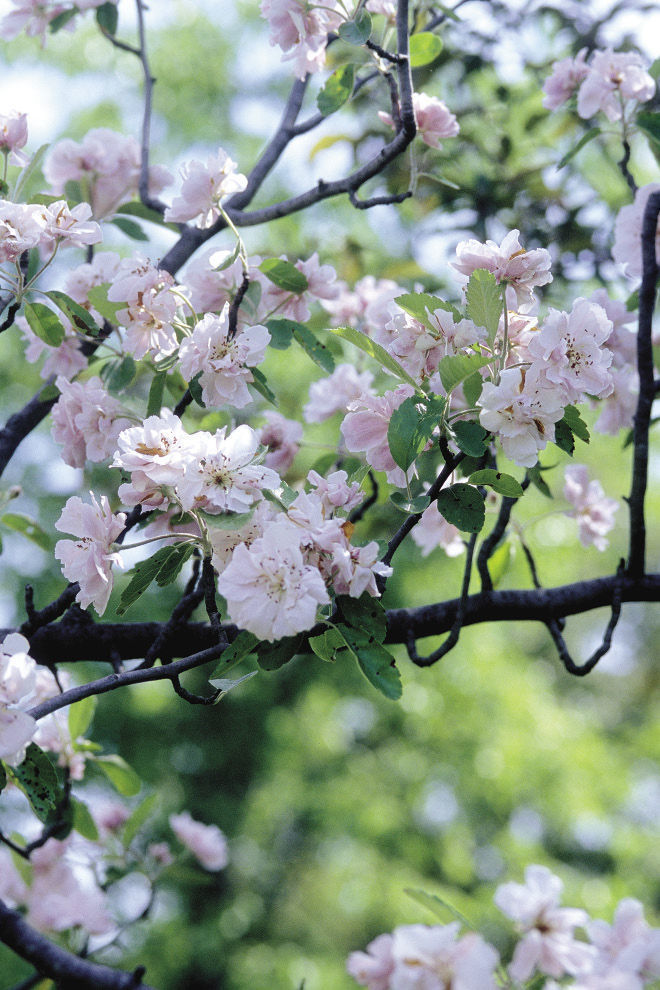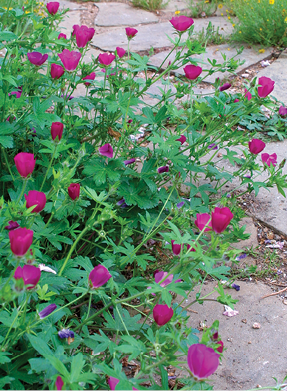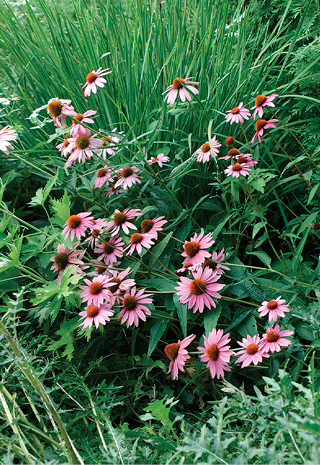

Prairie crabapple
Name: Malus ioensis and cvs.
USDA Hardiness Zones: 4 to 8
Size: Up to 20 feet tall and wide
Conditions: Full sun to partial shade; well-drained soil
Prairie crabapple (‘Prairie Rose’, pictured) is squat enough to clear utility lines and features a broad, open crown; exfoliating bark; and striking fall foliage. Its grace and sturdiness call for a prominent position, and it works well as an understory tree. It requires careful placement due to its tendency to sucker and sport spines but is otherwise low maintenance. Scented spring blossoms entice pollinators, followed on fruiting varieties by small crabapples that attract wildlife.

Prairie winecups
Name: Callirhoe involucrata
Zones: 4 to 8
Size: 1 foot tall, sprawling to 3 feet wide
Conditions: Full sun to light shade; dry to medium, well-drained soil
If you are looking for an easy-to-grow, low-trailing, long-blooming, hardy performer, feast your eyes on prairie winecups. It’s delightful spilling out of a hanging basket, draping over a wall, or rambling along a walkway. By summer, trim tired rambling stems back to the base. New leaves will reemerge and remain through winter. Ensure well-drained soil, good ventilation, and early-morning watering to avoid the dreaded fungal rust.

Yaupon holly
Name: Ilex vomitoria and cvs.
Zones: 7 to 11
Size: 12 to 20 feet tall and 10 to 15 feet wide
Conditions: Full sun to partial shade; moist, well-drained soil
A versatile and reliable addition to any front yard, yaupon holly makes a dense hedge for evergreen foundation plantings, windbreaks, or screens. Dwarf cultivars grow short and stout, while standard yaupons limbed up as multitrunked trees function as attractive specimens or anchors. Cultivars range from fastigiate to weeping forms. Red berries jazz up female plants, but some varieties remain fruitless. Yaupon leaves and twigs can be brewed as a caffeinated tea—Native Americans blended it into a purging drink to induce vomiting, hence the charming species name.

Purple coneflower
Name: Echinacea purpurea and cvs.
Zones: 3 to 9
Size: 2 to 4 feet tall and 2 feet wide
Conditions: Full sun; well-drained soil
Purple coneflower is well documented in horticultural literature, but I love it so much I must include it here. Flowers last seemingly forever (up to 10 days, with no signs of fading), and butterflies and hummingbirds relish the nectar. Plants colonize abundantly by seed, dashing any hesitation you might have of harvesting it (tinctures of its roots are supposedly good for boosting the immune system). Trim spent flower stalks, or leave them standing for winter interest.
Andrea DeLong-Amaya is the director of horticulture at the Lady Bird Johnson Wildflower Center in Austin, Texas.
Photos: top left, courtesy of Andrea DeLong-Amaya; top right, Bill Johnson; center left, Steve Aitken; center right, Susan A. Roth; bottom right, Jennifer Benner


















Comments
Log in or create an account to post a comment.
Sign up Log in